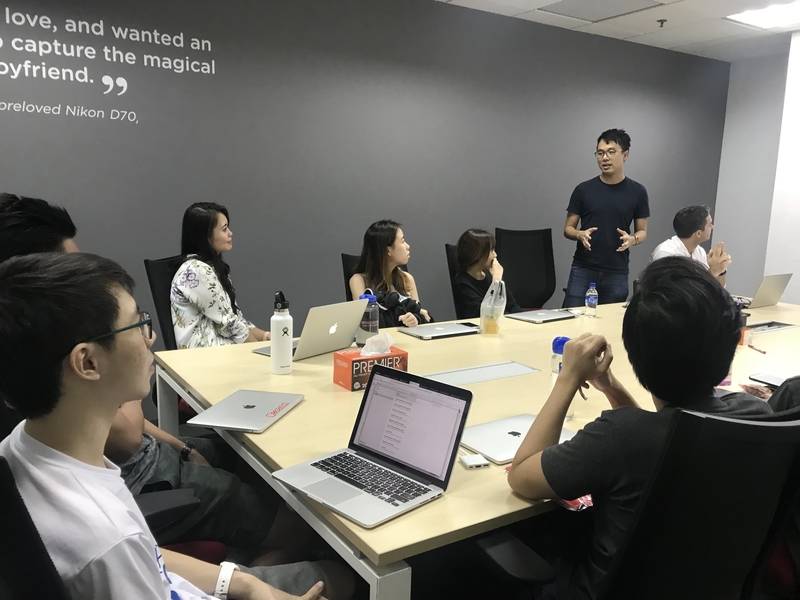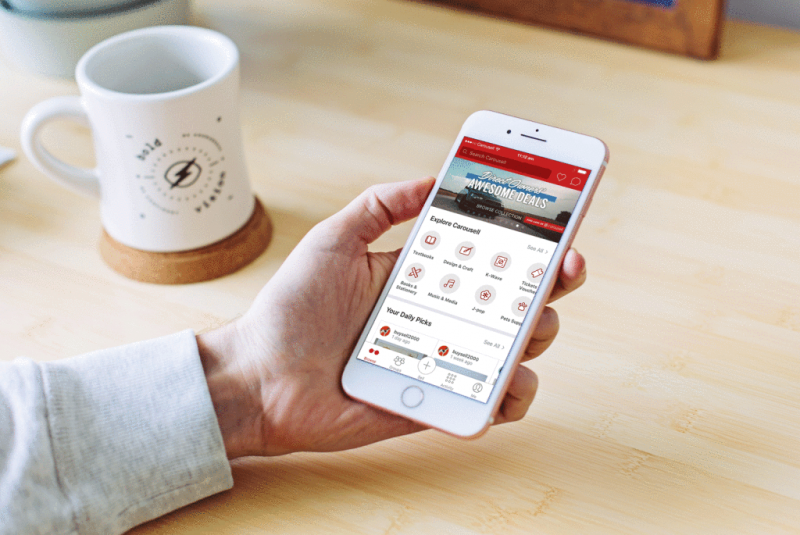- Weekly meetings important for team morale, says Marcus Tan, Co-founder
- Over half of Carousell users are aged 25 and older
- “The problem we are solving is a global one”
What’s it like to grow from a team of three into one that’s more than 200 full-time employees stretched across seven markets? That’s one of the questions we asked Marcus Tan, Co-founder and President of Carousell, in an interview with him on how startup founders should look at workplace culture at the same time as rapid expansion.
Carousell, started in 2012, was the brainchild of three National University of Singapore graduates – Marcus Tan, Quek Siu Rui and Lucas Ngoo – returning from a year in tech entrepreneurial hotbed Silicon Valley. Bitten by the innovation bug, they participated in a hackathon together and created a mobile app to help people buy and sell things online. They won the hackathon and went on to start a business.

To date, Carousell has raised more than US$126 million in funding, according to CrunchBase data. This includes its latest US$85 million investment from Rakuten Ventures and EDBI, among others, announced in May 2018. It has expanded quickly too, operating in markets like Malaysia, Indonesia, Hong Kong, the Philippines, Taiwan and Australia as well as home base Singapore. It boasts 144 million listings globally and has seen 50 million items sold on its app. Not only that, it has also launched CarouPay, a mobile wallet that helps users pay each other through the app. A Bloomberg report said that the company is rumoured to be valued at US$500 million, as of June 2018.
However, as Quek said in an interview last year, growth is not always a good thing. When a team is small, the co-founders could ensure that everyone is on the same page. However, as the company got increasingly bigger, there were people they couldn’t interact with on a daily basis, which led to hires having different ideas on the app’s direction. “People would work really hard but not in the same direction. Things are chaotic, things are breaking, the community is angry and the team morale is low,” he said.

Six years in, Carousell has become a household name in Singapore and is working towards doing the same regionally. We speak to Tan to find out just how Carousell has evolved past its early-stage startup phase, and where it’s headed in the next five years.
Questions and answers have been edited for clarity and brevity:
KrASIA: Carousell has grown from a headcount of three to more than 200 full-timers. What are some changes in culture, management and HR you and your co-founders had to instil to ensure a cohesive and innovative environment for the staff?
Tan: As we scale and invest in talent, we recognise the challenge of communicating and aligning everyone with our mission as the organisation grows.

We make it a point to hold organisation-wide meetings every Friday, called Family Friday, where we share important business updates. Teams have the chance to talk about projects they’re working on. We even allocate time for our people to speak about topics they’re passionate about. We’ve been holding these meetings from the very start when we had less than 10 people to today where we have more than 200 employees.
‘Family Friday’s are important for us because it gives us the platform to have everyone aligned with where the company is headed, which is especially important given how fast Carousell is growing.
KrASIA: What are some learning points with regard to hiring, firing and building a team across countries that may not share the same culture?
Tan: As a founding leader, it is important to contextualise the work we’re doing and, just as importantly, communicate the context to everyone.
This helps our employees better appreciate how their daily work ties back to the overall goal of inspiring every person in the world to start selling. We believe every person, at some point in their life, will have something to sell and we want to be part of that moment and experience.

Ultimately, we are in the business of classifieds and we want to be the number one classifieds business in the world in the longer term.
KrASIA: What’s the motivation behind launching a feature like CarouPay? Do you see Carousell becoming a superapp like Grab?
Tan: At Carousell, we are laser-focused on our mission of building a system to inspire everyone in the world to start selling.
Continually simplifying the buying and selling process is integral to this. The problem we are solving is a global one, and we have this once-in-a-lifetime opportunity to be the largest classifieds app because of the artificial intelligence (AI) and mobile phenomenon. By making the process simple, we hope to one day make online selling accessible to every smartphone user in the world. That’s the grand vision.

We are proud to roll out CarouPay, our first integrated payment system for users to buy and sell more conveniently and with greater assurance, but we are only less than one per cent done.
We don’t currently have plans to plug into the wider ecosystem of payments yet. We see a lot of potential in developing CarouPay and building up our marketplace offerings. The feature is still new, but encouraging feedback from our early adopters has helped set us up on the right path.
While we will continue to explore all possible options for improving our payment experiences, we will, most importantly, remain mission-first so we can focus on delivering products that will ultimately add value to our users’ lives.
KrASIA: What are your parents’ views on you working on Carousell, and how has it changed through the years as the app became more mainstream and commonplace?
Tan: When I first left my job to run Carousell full-time, my mother naturally expressed her worry. I could understand where she was coming from as it was an unconventional route.
However, despite her initial concerns, she showed me her full support with her actions. Like many women of her generation, she was the pillar of support for our family, even if that meant her career had to take a backseat. She taught me that it was never too late to work hard to realise my dreams, and this empowered me to take the leap with Carousell.
KrASIA: Carousell is becoming popular with people outside of the 18-25 age bracket. How does Carousell ensure that its design and marketing philosophies stay relevant even while trying to market to an older generation?
Tan: When we first started, we built an app that we ourselves would use, that leveraged the features of the smartphone, where anyone could snap a photo, list and then sell. Creating an experience native to mobile helped us serve a generation of young people, who have never used a desktop computer or bypassed it.
Now, one in four people in Singapore use Carousell and more than half of our users are aged 25 and above. We’ve seen our users’ needs evolve, resulting in more listings and greater demand in higher value categories, especially cars. To accommodate these, we’ve also focused efforts on growing our presence and marketplace offerings in high-value verticals such as cars and property. It also ties in with our goal to become the region’s leading classifieds marketplace.

Even as we expand the marketplace, our design principles stay the same. We continue to innovate on the Carousell experience and evolve to continue serving the next generation of consumers, who have come to expect convenience, intuitive and a much more personalised experience.
KrASIA: Where do you see Carousell in the next five years?
Tan: In the next five years, we want to reimagine the classifieds business, making buying and selling simpler for millions of users worldwide. We have started building Classifieds 4.0, which are defined by three key pillars: smart, convenience, and community.
Smart: To use the latest technology like AI and machine learning to create the best user experience. For example, we recently launched smart chat-reply which makes it a breeze for users to reply to chat messages with highly relevant suggestions — it even pulls out info from your listings that might have been missed out by the buyer.
Convenience: Based on our research and feedback from users, one of the most requested
features is payment and shipping services. We hope to make selling convenient for the time-starved generation making it simpler and safer for people too busy to negotiate or meet up. This also adds additional layers of trust and assurance on our platform, and users can deal confidently on Carousell.
Community: Lastly, we want to continue to build a strong, social element into the marketplace,
so we are not just a platform for buying and selling but also one where individuals can gather to share and discuss their favourite topics or what they’re passionate about. It is about connecting people; bringing them closer to interact and help each other out on Carousell.
Editor: Ben Jiang
